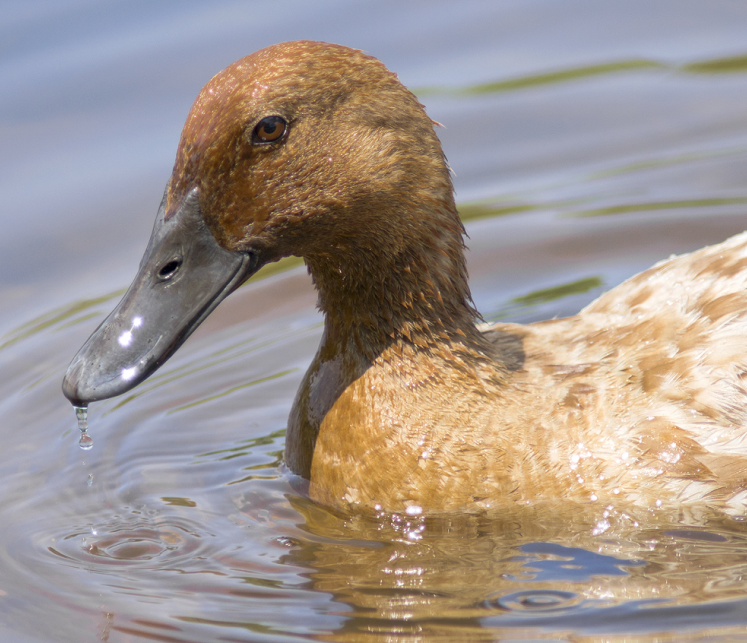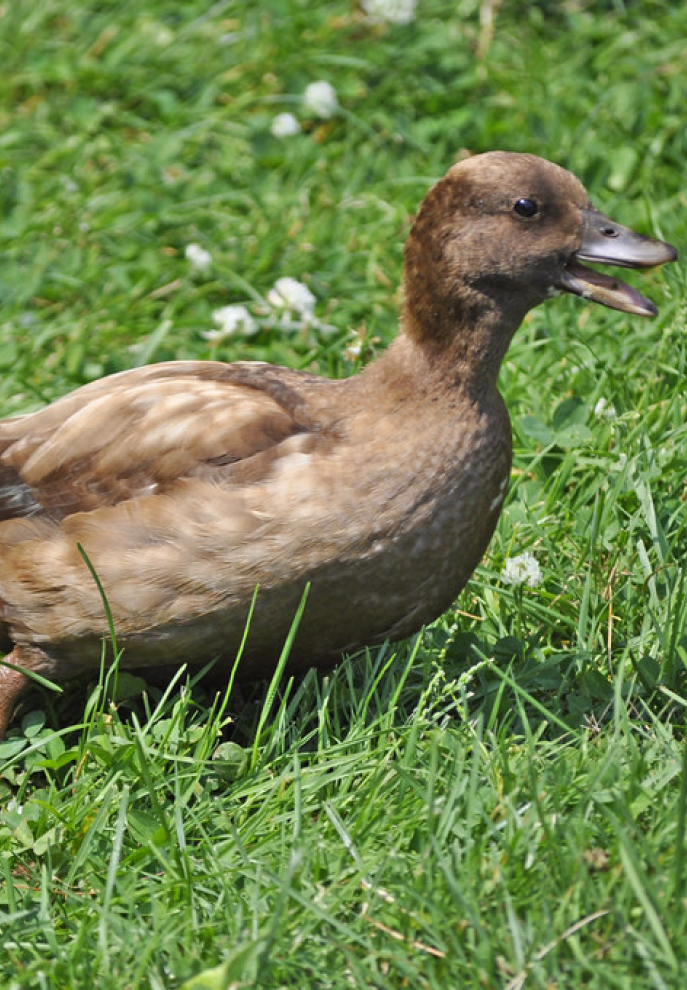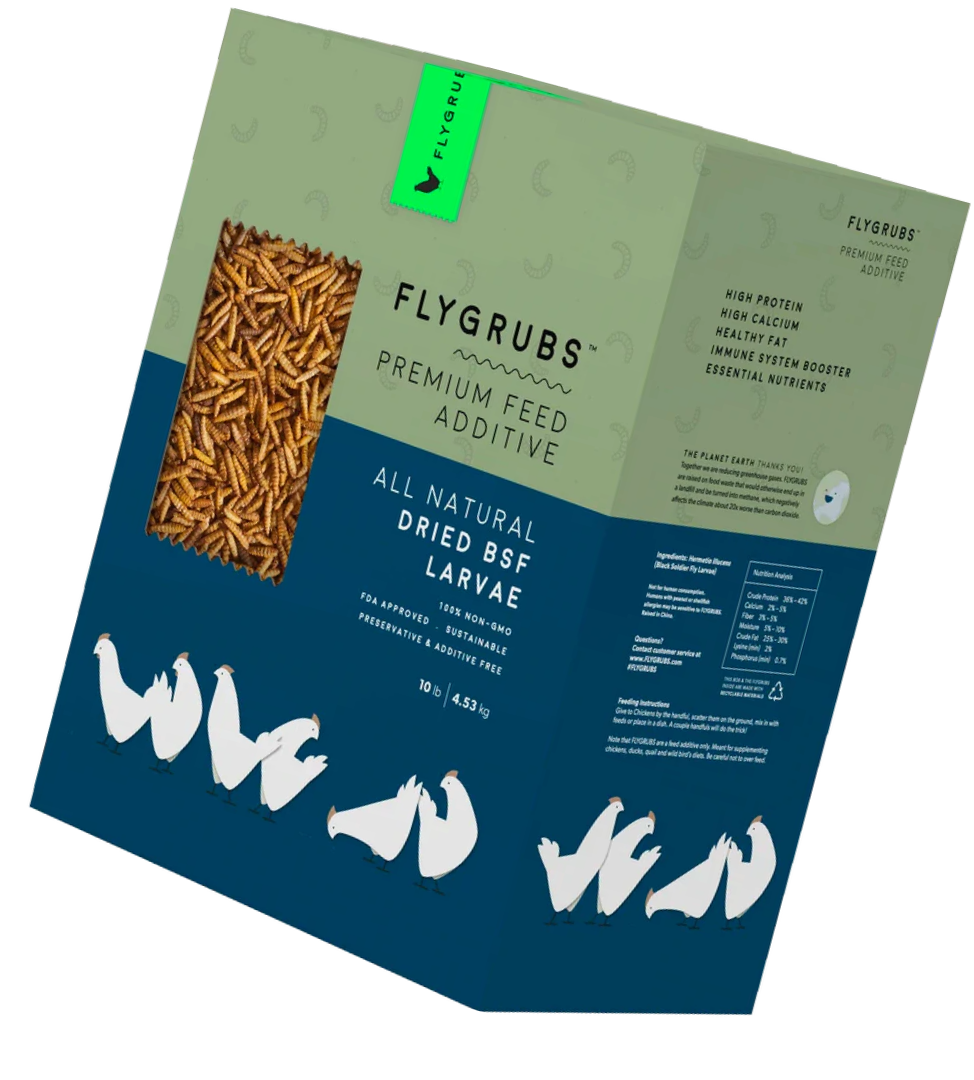
The Khaki Campbell duck is a popular domestic duck breed known primarily for its exceptional egg-laying capabilities. The Khaki Campbell duck is a versatile breed, ideal for those interested in both egg production and friendly companionship. Their adaptability and low maintenance make them a popular choice among duck enthusiasts.Here’s an overview of the breed, including its characteristics, care requirements, and economic importance.
- Medium-sized birds
- Khaki or light brown plumage
- Legs and Feet are orange
- Orange or yellow, flat
- Sleek and athletic with a well-proportioned body

BREED & ORIGIN
Khaki Campbell. England, developed in the early 20th century

LIFE EXPECTANCY
8-12 years

HEIGHT & WEIGHT
Drakes (males): 5-6.5 lbs (2.3-3 kg)
Ducks (females): 4-5.5 lbs (1.8-2.5 kg)

Duckling: 0-6 weeks

Juvenile: 6-16 weeks

Adult: 16+ weeks
LOW
MEDIUM
HIGH
Temperament
Friendly, curious, and intelligent
Activity Level
Active and enjoys foraging
Climate Tolerance
Adaptable to various climates but prefers moderate temperatures
Genetic Traits
Lean Body, Khaki Color and Strong Foraging Instincts
Egg Laying Capacity
High, producing about 250-300 eggs per year
Broodiness
Rare; often requires artificial incubation

Feeding
A balanced diet of grains, greens, and protein-rich duck feed is necessary. Indian Runners are superb foragers, and their diet can be supplemented with insects, snails, and worms they find outdoors.

Housing
Require ample space due to their active nature. They need protection from predators and weather, ideally in a coop with 3-4 square feet per duck. A safe outdoor space for foraging is ideal.

Health
Generally hardy, though their active nature can make them more prone to leg injuries. Clean water for swimming and hygiene is vital for their health.

Breeding Practices
Khaki Campbells are prolific layers, and eggs can be incubated for about 28 days. Ducklings grow quickly and require high-protein diets.
Ducklings need warmth and a secure brooder for the first few weeks, along with plenty of clean water and a protein-rich diet.
Nutritional Needs
Balanced nutrition with ample protein, especially during the laying season, is essential for sustaining their high egg output.
Flygrubs provide essential protein and calcium, supporting egg production. It complement their diet, providing high protein, healthy fats, calcium, and phosphorus and can be integrated into the diet from ducklings to adulthood. Easy to incorporate, can be fed
dried or rehydrated.

The Khaki Campbell duck is one of the most popular breeds among backyard farmers and small-scale producers due to its high egg production and friendly disposition. They are often seen as a sustainable source of protein and are valued in various culinary traditions.
Category |
Details |
|---|---|
Breed |
Khaki Campbell |
Origin |
England, early 20th century |
Temperament |
Friendly, curious, and intelligent |
Common Health Issues |
Obesity, bumblefoot, respiratory issues |
Commercial Use |
Primarily for egg production |
Climate Tolerance |
Adaptable; prefers moderate temperatures |
Feeding |
Balanced diet with grains and greens |
Fertility Rates |
High fertility, best results with artificial incubation |
Backyard Use |
Popular for small farms due to easy management and temperament |
Population Status |
Not endangered; widely bred |
Housing Requirements |
Dry, safe housing with outdoor access |
Activity Level |
High; enjoys foraging and outdoor space |
Khaki Campbell ducks are primarily raised for egg production, recognized for their
high yield and efficient feed conversion. With a consistent annual egg output, they make a reliable source of nutritious eggs, contributing to both home consumption and local markets